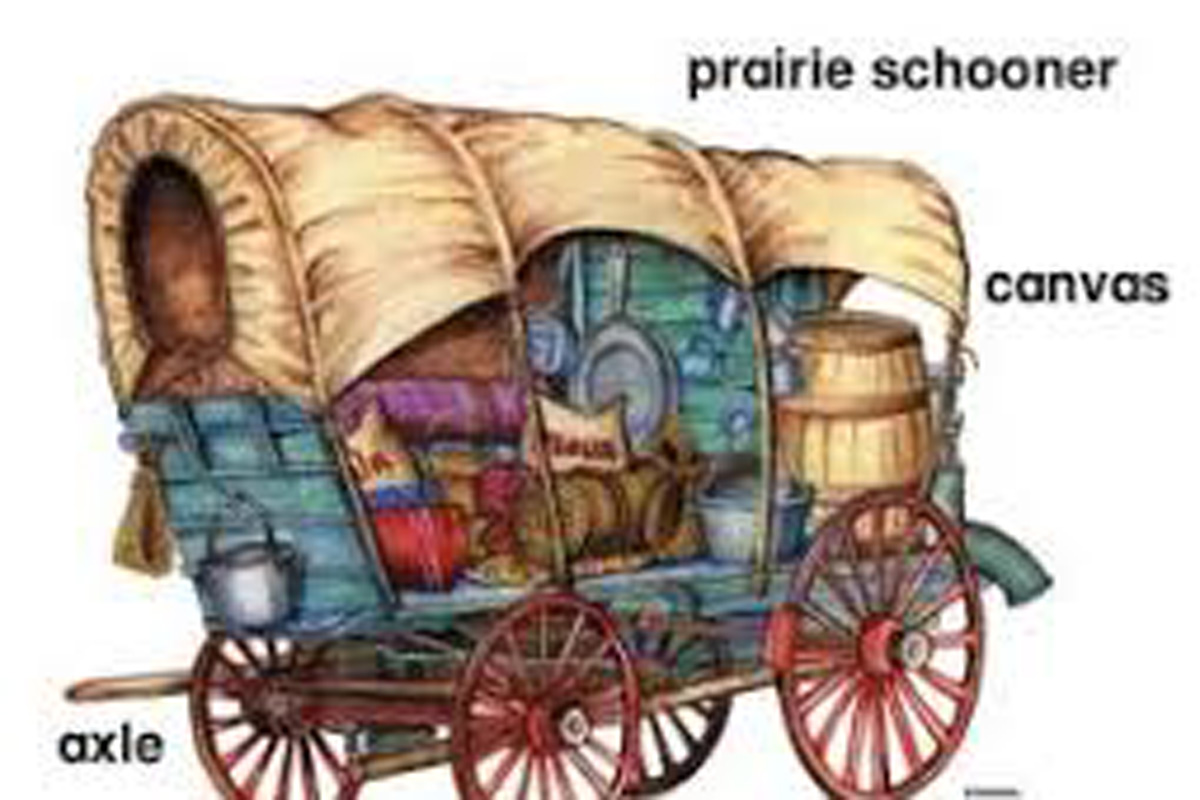
Prairie Schooners
Most covered wagons used in the westward expansion was farm wagons with canvas tops. Emigrants traveling on the Oregon and California Trails didn’t use the big, heavy Conestoga wagons. They preferred Prairie Schooners. A wagon had to be light enough to not over tax the mules or oxen that pulled it and strong enough not to break down under loads of as much as 2,500 pounds. For these reasons, wagons were constructed of such hardwoods as maple, hickory and oak. Iron was used only to reinforce parts that took the greatest beating such as tires, axles and hounds. An emigrant wagon was not comfortable to ride in, since wagons lacked springs and there was little room to sit inside the wagon because most space was taken up with cargo.
As families moved west, a prairie schooner pulled by teams of mules or oxen was a common choice. It was like the Conestoga wagons, but much lighter with a flat body and lower sides. They were typically covered with white cloth and from a distance resembled a ship. Emigrants in Prairie Schooners often traveled in convoys and covered up to 20 miles a day which meant an overland trip could take only five months.






